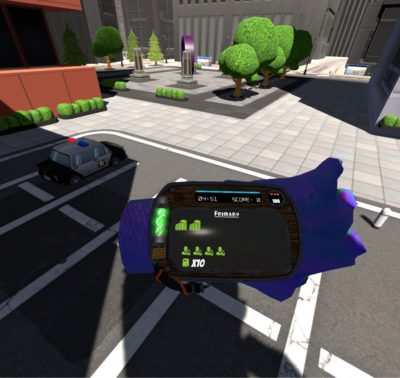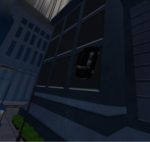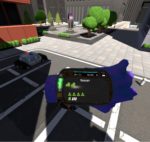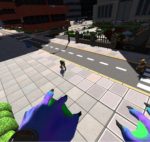Developer/Publisher: Impact Gameworks || Outlook: Positive
Tangledeep is the 16-bit roguelike that should be on your radar. A beautifully artistic, colorful, and lore-based game that will seemingly have much to offer and iterate on when it finally releases later this year, currently planned for December 2017. Tangledeep pulls deep from the SNES Final Fantasy games in terms of overall aesthetic with music, sound effects, and art but makes it its own with unique gameplay features and iteration.
I can’t praise the games presentation and production value enough. This is a swell game to immerse yourself in and right down to the text boxes you’ll be hitting that nostalgia bong over and over (nostalgia bong legal for only 30+). The music is beautifully composed and really sells you into the exploration dynamic of the game’s story. The lore of Tangledeep is also mysterious and fanciful — it really piques the interest in discovering more about the forest of Tangledeep and figuring out what secrets it holds. Since Tangledeep is but a snapshot of the rest of the world, you don’t know what visitors you may come upon in the base camp as it seems “guest” vendors are randomized and will sell things that aren’t usually available if you have the money for it.
Obviously, since Tangledeep is a roguelike, there are many roguelike features, and multiple ways to experience the game itself. The overall progression comes from your town development, although it is a bit sparse in terms of actual benefits to be gained. You have six plots where you can plant magical seeds that provide food to you at certain increments. You can also tame beasts using a special item and drag them back to town for later use as a companion. Many of your first attempts at getting deep into the forest will probably be fruitless as you discover the mechanics and how things work, as well as fiddling around with the different classes (called jobs) available for play and figuring out what works for you.
Gameplay-wise, you’ve got an expansive list of jobs to play with — currently nine. Each job is unique and actually has a bit of an interesting spin on some of the usual class types, from a lore angle. “Personal” stories of each of the individual jobs don’t seem to really get in the way of the greater narrative, but the customization and skill-based special actions go a long way in changing up the experience from one run to the next.
Though the game is turn-based, it’s played in real time. It’s more like a turn-counter with particular actions taking a certain amount of turns to cast or recharge. There is also an opportunity to pause during hectic moments of combat to plan out what you strategically want to do in case you get in a bind. You can also progress time without moving, so you don’t need to get out of position. Levels are procedurally generated, with some side rooms changing up the tileset dramatically, so the game doesn’t get stale at all. Trying out the different jobs is also part of the fun and each class can be built to focus on different sets of skills depending on you preference, so the iteration just goes that much deeper.
The meta game is always important for a roguelike. There is an “intended” way to play Tangledeep where you will encounter permadeath at the end of your run, only allowing for any progress in town to stand. Being called “Heroic Mode,” this gives you the opportunity to switch your job and try out a new spec for the penalty of starting from scratch. Adventure Mode is another option where instead of encountering permadeath, you will be sent back to town with penalties, losing your unspent Job Points/Money and half of your XP progress. The penalties are hefty, but much less impactful than a full reset. “Hardcore Mode” is the same as Heroic Mode, except all progress made with the character is wiped. Each individual Save Slot is party to as many characters as you think necessary to play with, and you can only “Continue” progress with an Adventure Mode character.
Unfortunately, Tangledeep isn’t exactly the mode user-intuitive when it comes to its menu system. Menu-hunting is a bit of a pain, and can be confusing at times as to what commands you are telling the menu to do. Arrow keys don’t work at all, only being able to use the WASD to control a menu (this just feels weird) and using a controller instead also feels clumsy. When opening the menu, you are not going to the menu you were last in, so if you need to make any tweaks to what you had previously done, its more than one click away when it shouldn’t be any clicks away. Equipment is also hard to figure out sometimes, since it is hard to compare equipment efficiently and whether or not you are actually equipping an upgrade can be questionable at times. You have four different weapon slots for changing up your strategy on the fly (ranged vs. melee, for example) — but the inactive ones don’t give you additional stats. It feels like that there should be more information about equipment in general and how things affect your gameplay but as is it feels too underdeveloped to be satisfying. You also don’t encounter enough variance or quantity of loot to really have to make interesting decisions as you get by with just equipping whatever has a better rarity quality. There are also other lesser issues with the logic and layout of the menu that just don’t feel right and needs to be smoothed out before release to make it a more useful tool than it currently is.
Tangledeep has got a lot going for it, and I’m excited to see if more story lives up to my expectations. I’d really like to see more progression mechanics that allow for strengthening your new characters further as you keep playing. Refinements to the menu system to be a less frustrating experience is the number one goal in my mind, so hopefully that is on the radar of the developers. A little more focus on the loot/reward system would also be in order. Tangledeep is being updated constantly by its developers while in Early Access, so it’ll be an interesting title to watch.





























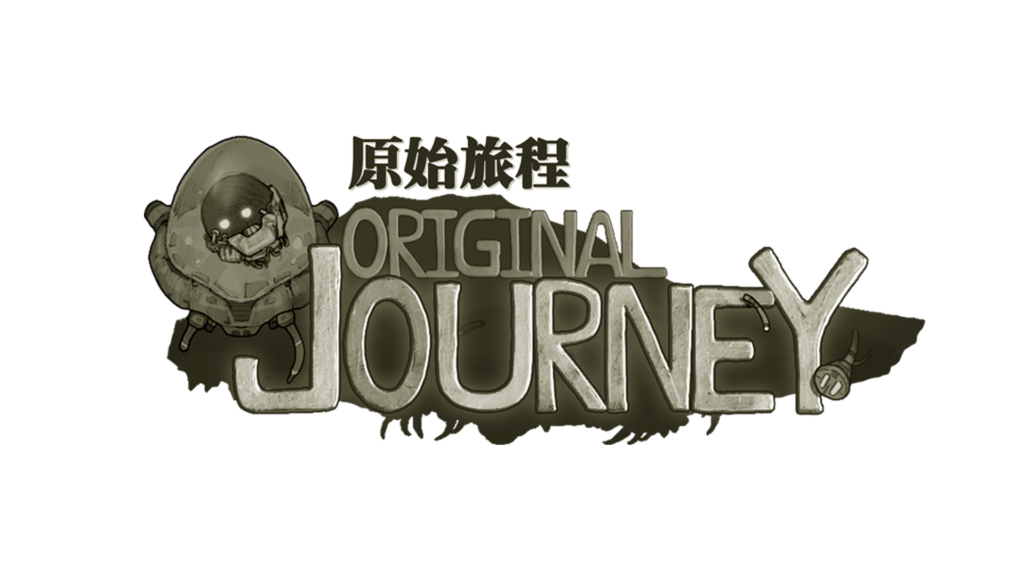
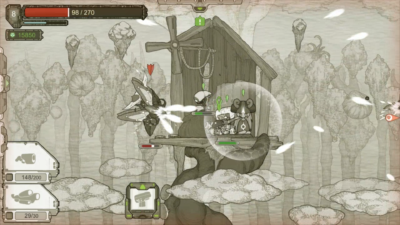 Alright, so in Original Journey (“original title do not steal”) you’re a plant thing in an exo suit on a mission with dozens of others to save your planet. For plot device reasons you’re not told why you’re on the planet Shadow (“original name do not steal”) aside from these green crystals, which, incidentally, a vibrant green object in an otherwise monochrome game. These things, you see, heal your folk and planet, or something. I don’t know. Anyway, a bunch more stuff happens that doesn’t even make sense in any context, like you needing to get monster teeth to make a translation program for your droid, or talking to a dude with amnesia that gives you an emerald-looking thing called a Chaos Key (“original concept and name do not steal”) and some schematics only your race could ever utilize. I don’t understand who’s writing this, or if it’s a translation error, but the story really needs, like… a spit shine, at least. It’s rough, and, at points: totally inane.
Alright, so in Original Journey (“original title do not steal”) you’re a plant thing in an exo suit on a mission with dozens of others to save your planet. For plot device reasons you’re not told why you’re on the planet Shadow (“original name do not steal”) aside from these green crystals, which, incidentally, a vibrant green object in an otherwise monochrome game. These things, you see, heal your folk and planet, or something. I don’t know. Anyway, a bunch more stuff happens that doesn’t even make sense in any context, like you needing to get monster teeth to make a translation program for your droid, or talking to a dude with amnesia that gives you an emerald-looking thing called a Chaos Key (“original concept and name do not steal”) and some schematics only your race could ever utilize. I don’t understand who’s writing this, or if it’s a translation error, but the story really needs, like… a spit shine, at least. It’s rough, and, at points: totally inane.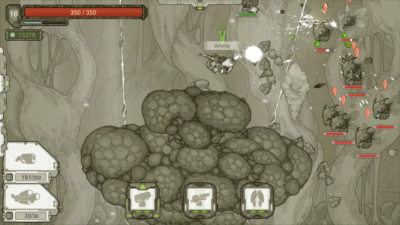 This title’s a sidescroller, and your character’s armament is limited to a suit (with a chip in it; think socketing items in Diablo or Path of Exile), a left weapon and a right weapon. Most of the weapons are guns, but for some reason you have no ability to aim these fucking things. Your vegetable’s aim sways back and forth at approximately an upward 45 degree angle, making anything with less spread than a shotgun annoying to use. Aiming directly at an enemy involves walking right next to them and fucking pulling the trigger. This means that often times, for air enemies, you’re jumping constantly in the air in order to do any good. Weapons have limited ammo, so often times you’ll be wasting most of your ammo trying to knock some bullshit out of the sky. This gets worse later, with enemies hanging out toward the bottom of the goddamn screen. WHY? WHY DO THIS? WHY THE FUCK CAN’T I AIM AT HIM? I HAVE TWO FUCKING GUNS AND I CA-
This title’s a sidescroller, and your character’s armament is limited to a suit (with a chip in it; think socketing items in Diablo or Path of Exile), a left weapon and a right weapon. Most of the weapons are guns, but for some reason you have no ability to aim these fucking things. Your vegetable’s aim sways back and forth at approximately an upward 45 degree angle, making anything with less spread than a shotgun annoying to use. Aiming directly at an enemy involves walking right next to them and fucking pulling the trigger. This means that often times, for air enemies, you’re jumping constantly in the air in order to do any good. Weapons have limited ammo, so often times you’ll be wasting most of your ammo trying to knock some bullshit out of the sky. This gets worse later, with enemies hanging out toward the bottom of the goddamn screen. WHY? WHY DO THIS? WHY THE FUCK CAN’T I AIM AT HIM? I HAVE TWO FUCKING GUNS AND I CA-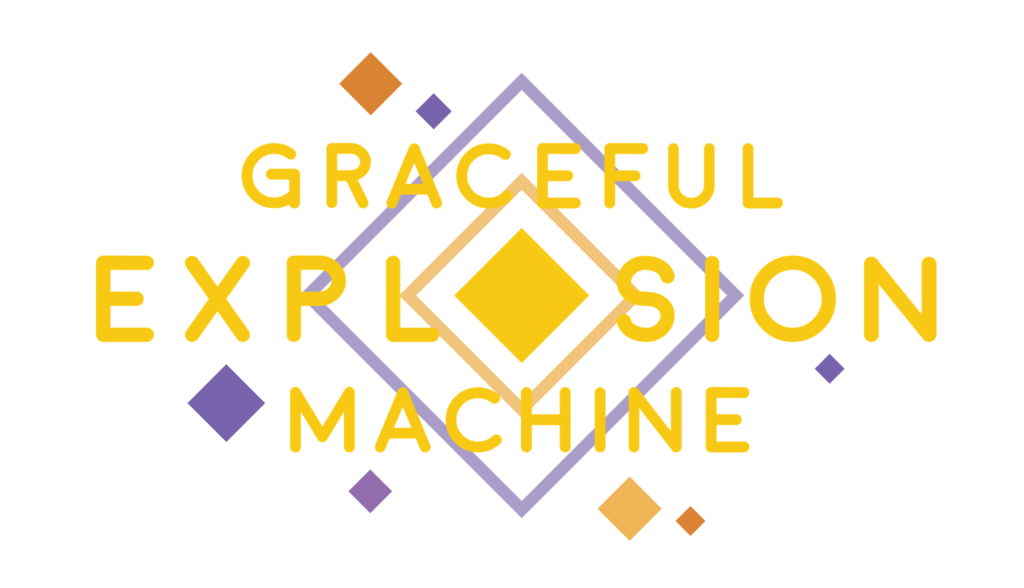
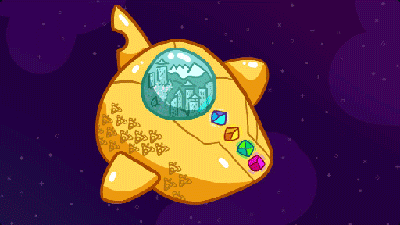
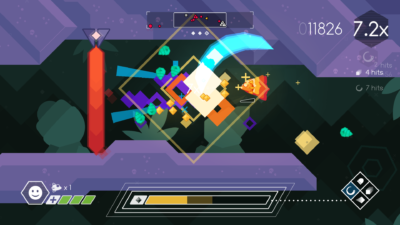 Now, for some reason this ship is unarmed until it picks up conspicuously laid out weapons in the tutorial, which is probably why these yellow guys got their shit ruined in the first place. First you get a pea shooter, which rapidly fires out blasts until it overheats, which is its only constraint. Second weapon, you get an “energy sword” which spins around twice on use, tearing into enemies and destroying enemy bullets. Next is a sniper beam, which is a very powerful beam that does a lot of damage and tears through enemy shields, but forces you to move slowly. The last is a missile barrage that can be directed out of your ship with a directional input before they race off to seek targets. With exception of the regular blaster, all weapons require weapon energy to fire. This is harvested from enemies on death via the yellow crystals they drop. The weapon energy meter doesn’t say what the max is, or how much each crystal is worth, nor is the energy required for attacks displayed anywhere, so it’s more of a fuel meter in that regard. Crystal/weapon power management seems to be the main bottleneck of player skill. Players need to swoop through slain enemies in order to get close enough to collect weapon power, which dictates how often you can use area of effect attacks. Gameplay quickly maxes out as an advanced game of chicken, blowing through enemies to collect weapon power to in turn massacre more enemies. The only real thing that mixes this up is how close enemies spawn, and if there’s an enemy that requires you to use the sniper cannon to kill quickly.
Now, for some reason this ship is unarmed until it picks up conspicuously laid out weapons in the tutorial, which is probably why these yellow guys got their shit ruined in the first place. First you get a pea shooter, which rapidly fires out blasts until it overheats, which is its only constraint. Second weapon, you get an “energy sword” which spins around twice on use, tearing into enemies and destroying enemy bullets. Next is a sniper beam, which is a very powerful beam that does a lot of damage and tears through enemy shields, but forces you to move slowly. The last is a missile barrage that can be directed out of your ship with a directional input before they race off to seek targets. With exception of the regular blaster, all weapons require weapon energy to fire. This is harvested from enemies on death via the yellow crystals they drop. The weapon energy meter doesn’t say what the max is, or how much each crystal is worth, nor is the energy required for attacks displayed anywhere, so it’s more of a fuel meter in that regard. Crystal/weapon power management seems to be the main bottleneck of player skill. Players need to swoop through slain enemies in order to get close enough to collect weapon power, which dictates how often you can use area of effect attacks. Gameplay quickly maxes out as an advanced game of chicken, blowing through enemies to collect weapon power to in turn massacre more enemies. The only real thing that mixes this up is how close enemies spawn, and if there’s an enemy that requires you to use the sniper cannon to kill quickly.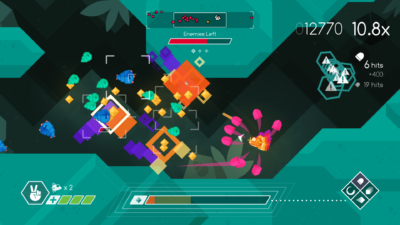 The game is divided into levels on four planets. A few open up for play, unlocking more as you complete them, culminating in a “warp” level to move on to the next planet. Each level has phases, which are this game’s checkpoint system; waves of enemies will spawn throughout an endlessly scrolling cave section as the player kills everything. Points are awarded for each kill, a multiplier in effect for consecutive kills and keeping a spree going. The ship is able to take three hits before dying, but each level has two continues, which can be utilized to restart from the beginning of the last phase that was started. The game isn’t exactly easy, but with tools like these, it’s not difficult either.
The game is divided into levels on four planets. A few open up for play, unlocking more as you complete them, culminating in a “warp” level to move on to the next planet. Each level has phases, which are this game’s checkpoint system; waves of enemies will spawn throughout an endlessly scrolling cave section as the player kills everything. Points are awarded for each kill, a multiplier in effect for consecutive kills and keeping a spree going. The ship is able to take three hits before dying, but each level has two continues, which can be utilized to restart from the beginning of the last phase that was started. The game isn’t exactly easy, but with tools like these, it’s not difficult either.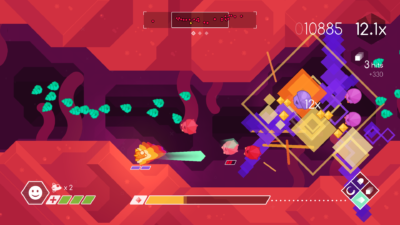 To its credit: the game runs well, and makes use of high refresh rate monitors. The music is benign, but not bad by any means. The controls on keyboard are serviceable, though I recommend controller. What’s more to say about a game that, mechanically, is solid even if there’s no carrot on the stick past score-whoring? There’s nothing particularly wrong with it, but it’s uninspiring, like a joke you’ve heard before, or a monologue on a topic you’re uninterested in.
To its credit: the game runs well, and makes use of high refresh rate monitors. The music is benign, but not bad by any means. The controls on keyboard are serviceable, though I recommend controller. What’s more to say about a game that, mechanically, is solid even if there’s no carrot on the stick past score-whoring? There’s nothing particularly wrong with it, but it’s uninspiring, like a joke you’ve heard before, or a monologue on a topic you’re uninterested in.














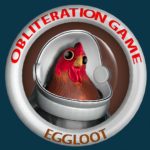






































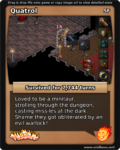










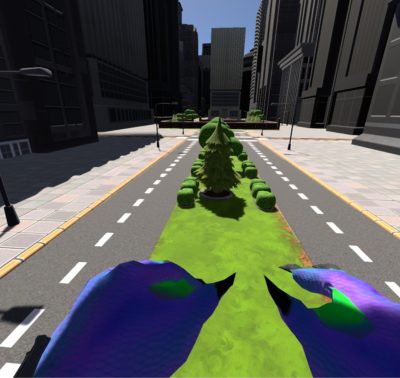 First thing’s first: the unskippable tutorial. You’re not allowed to play the main game or multiplayer without being a big boy and/or girl and playing along with the voiceover’s lesson plan, so I figured I’ll just jump through the hoop. I appear to be a big fishy monster with a big ass watch on my left arm. It’s not super clear from the narration, but from the store page description you can piece together that this annoying dude in your ear is yourself. They teach you how to walk, and then explain some basic monster techniques at your disposal: punching, grabbing, throwing, climbing and jumping.
First thing’s first: the unskippable tutorial. You’re not allowed to play the main game or multiplayer without being a big boy and/or girl and playing along with the voiceover’s lesson plan, so I figured I’ll just jump through the hoop. I appear to be a big fishy monster with a big ass watch on my left arm. It’s not super clear from the narration, but from the store page description you can piece together that this annoying dude in your ear is yourself. They teach you how to walk, and then explain some basic monster techniques at your disposal: punching, grabbing, throwing, climbing and jumping.